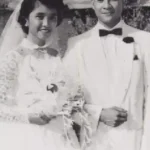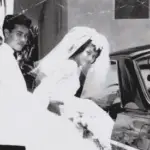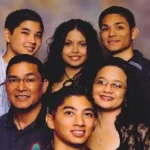CHamoru/Chamorro Roots Genealogy Project
Table of Contents
Share This
Hale’ Chamorro
The vision of the Chamorro Roots Genealogy Project, Hale’ CHamoru, is to be the premiere portal of Chamorro/CHamoru genealogy, where CHamoru, both in the Marianas and abroad, can have access to a centralized repository of genealogy information. The goal of the project is to contain as much accurate and relevant genealogy information on the CHamoru people of the Mariana Islands.
History of the project
The CHamoru Roots Genealogy Project began in November 2003 and evolved from the Punzalan Project of 1997 located at www.punzalan.net. The genealogy research quest initially began with the ancestors of Bernard Punzalan, the project’s founder, son of Eustaquio Anderson Punzalan (Familian Pansi and Che’) and Rosita Leon Guerrero Cruz (Familian Matias, Jai/Yai and Mafongfong); along with his wife Josephine, daughter of Maria Barbara Garrido Guerrero (Famlian Matias, Matak and Robat) and Joaquin Taitano Manibusan (Familian Le’le).
The Punzalan Network’s website was developed with a content management system backbone, which allowed users to provide input and collaborate on the project’s content. This project was to document and pass on the family roots of Bernard and Josephine to their sons: Brandon, Bryant and Bernard II.
What started out as a family roots project, however, would soon turn into a community wide project for CHamorus.
Initially, the two primary sources of family data came from funeral and obituary announcements from 2001 to 2004 from the Pacific Daily News, a Guam newspaper, and from registered users of the Punzalan Network. One by one, each announcement and user submission was captured in a family tree software database.
Initially only families that were related to Bernard Punzalan were captured. However, as the database began to grow and family relationships started to connect, it became more apparent that there was a need to include documenting every name outside of the Punzalan family, since family ties within the database grew. With that decision, more than 12,000 names were initially captured.
By the end of 2004, the CHamoru Roots Genealogy Project had completed its evolution from the Punzalan Project and had more than 50,000 names in the database. The project hit a major milestone after completing the data capture from the Familian CHamoru Genealogy Database Index housed at the Richard F. Taitano Micronesian Area Research Center at the University of Guam. The electronic data that was added consisted of more than 35,000 names from the Spanish 1897 Census, the Guam Newsletter and the Guam Recorder.
In February 2006 Brent Champaco, a CHamoru reporter for the Tacoma News Tribune, wrote several articles that featured CHamorus in the state of Washington. One of these was about the Punzalan Network. By then, the project had contained more than 80,000 names in the database with sources being researched and captured from the Internet, such as online family trees, census data, and also from many interested registered network users submitting family information.
By January 2007, Punzalan officially established CHamoru Roots Genealogy Project with its own identity and Internet domain of www.chamorroroots.com.
Today, the project has more than 4,000 registered users with a database that contains more than 125,000 with names going as far back as the 1700s. The database is updated weekly and continues to grow.
We are one
The essence of the CHamoru Roots Genealogy Project is to identify, collect and preserve a part of CHamoru history. It is a repository of information in which CHamorus can associate and learn about their ancestry and that can be tied to significant events which have occurred in the past and those responsible for making it happen.
It also brings the CHamorus together in a virtual world-wide forum and recognizes that CHamorus are one and of the same people with origins from the Mariana Islands, regardless of whether currently from Guam, the Commonwealth of the Northern Mariana Islands, or abroad.
CHamoru family clan names
CHamoru family clan names are an inherent component to the CHamoru culture as well as a means to identification of a family lineage. One of the many objectives of the CHamoru Roots Genealogy Project is to identify the clan names within a person or family’s identity.
The project leaders are hopeful that by documenting this information it will not only divulge the clan name origin, but also the history behind the name and help bridge and convert family gaps to relational links.
Genealogy challenges
Most likely CHamorus identified themselves with only one name before the Spanish Era. Surnames in the Mariana Islands did not likely occur until the Spanish began christianizing CHamorus with the arrival of the first missionaries in 1668.
Upon conversion, through baptism, CHamorus assumed a Christian first name. The CHamoru name originally held became a surname. This is evidenced in the 1727 Census of the Marianas. It is common to find that a father, mother, brother, or sister have different surnames. Unless one’s family unit was recorded either by the Spanish or other European record, or perhaps survived oral history within a family, it becomes difficult to trace family lineages prior to the 1800s.
Only those families likely tied to either the manakilo (high class) clans or with strong Spanish bloodlines deeply rooted in history such as the Torres family, have a good chance of tracing their genealogy prior to the 1800s. While the Catholic Church may also have vital records for recording sacraments such as baptisms and marriages, many records were destroyed during World War II or during typhoons.
Another challenge in researching CHamoru genealogy is that there is a Spanish tradition and influence on how names were recorded. In traditional Spanish practice the a person’s name would be a first name immediately followed by the father’s surname and lastly followed by the mother’s surname. For example, the name “Matias Leon Guerrero,” as it is known today, would be interpreted as Matias’ father’s surname “Leon” and his mother’s surname “Guerrero” during the Spanish Era. In some Spanish historical records it may be recorded as “Matias de Leon y Guerrero.”
However, if “Matias” were of Portuguese descent, his father’s surname would have been “Guerrero” and his mother’s surname would have been “Leon.” The traditional Portuguese naming standard is the opposite of the Spanish tradition. Therefore, if a Spanish enumerator were not aware that “Matias” was of Portuguese descent, one would never know today his true decent unless diligently researched.
Naval Captain William W. Gilmer, a governor of Guam, introduced another genealogy challenge on March 4, 1920. Governor Gilmer decreed that all residents of Guam sixteen years and older must register and obtain a cèdula personal, which was basically a certificate of identification. The purpose for creating these identifications was to enable a person’s identity to perform transactions with the government such as tax payments, land transfers, birth registrations, court matters, and so on. Another purpose was to reduce the centuries-old Spanish custom of a child bearing the father’s last name first and the mother’s maiden name second and reduce the practice of double names, (i.e. changing the name of what may once been “Juan de la Cruz y Torres” to “Juan Torres Cruz”), bringing names in line with the Western tradition of the father’s name being recorded last.
The result of this naming protocol left some people officially carrying their mother’s maiden name as their final surname. There are some brothers and sisters even today, where one has the mother’s last name and another has the father’s last name stemming from this decree. For instance Juan Torres Cruz’s sister Juanita may have ended up with the name Juanita Cruz Torres. In some cases on Guam, the “Leon” was dropped from “Leon Guerrero,” and some families now carry only the “Guerrero” surname, making it even more difficult to research.
For further reading
Chamorro Roots Genealogy Project. “Home.”



